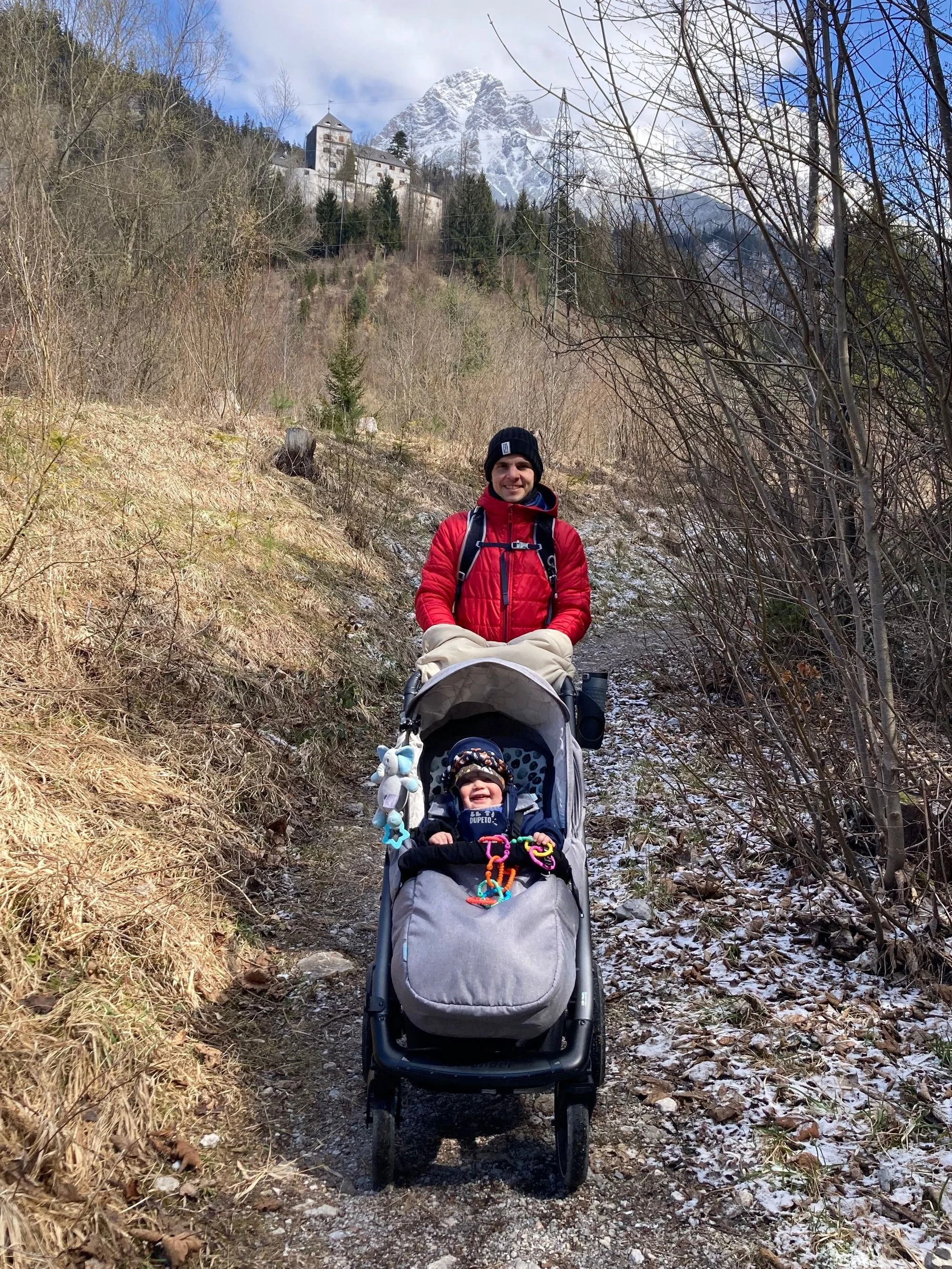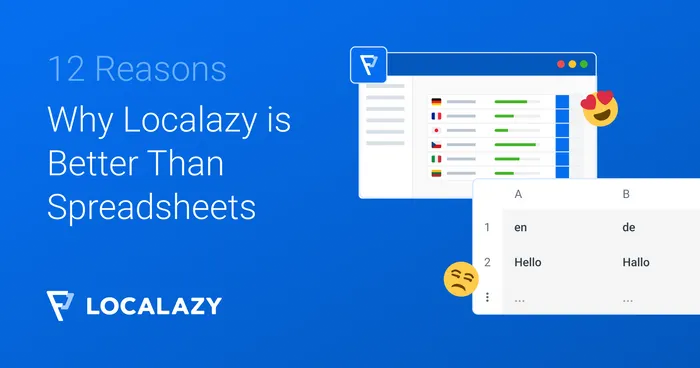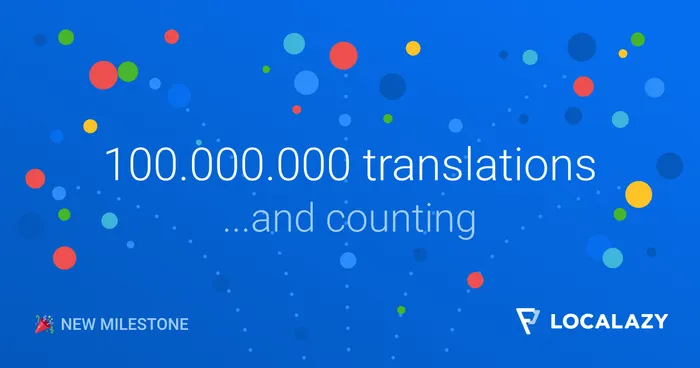Writing great code and providing a greater user experience is crucial to develop usable, impeccable features for Localazy - and to make our users love them! Our front-end guru, Dan Charvát, has been instrumental in ensuring that our vision becomes a reality and is next on our Meet the Team series.
Dan, 29, lives in Slavkov u Brna, close to the second-largest city in the Czech Republic, Brno. He enjoys bouldering, family time, and the countryside and is currently waiting for his new home to be finished to take a big life step: moving to a small village close to the forest. 🏠 🔨 Today, we discuss UX, user feedback, and Localazy's newest updates with him. And, of course, we get to know him better - so let's begin!

👋 Getting to know Dan 🔗
Hey, Dan! Tell us - what is your role in Localazy, and what are your main responsibilities?
In my position at Localazy, I have two primary roles: Lead Front-End Developer and Business Development. As a Front-End Developer, my main responsibility is to ensure the accurate implementation of designs, which are mostly prepared by my colleague Ondra. This involves making sure that the design covers all possible user scenarios, ensuring a satisfactory user experience that aligns with the initial prototypes. Additionally, I focus on preventing the introduction of any issues or slowdowns to existing functions, especially within the core product.
In my other role, Business Development, I meet with potential, new and existing users. These meetings serve as opportunities to establish partnerships, guide new users through their initial steps, and help them optimize their usage of our product.
So, does user feedback influence your role too?
Of course. In fact, user feedback plays a vital role in this process and serves as the cornerstone of our decision-making. We collect feedback from various sources, allowing us to consider multiple perspectives and opinions.
My role (as is true for my other team members) truly extends beyond development tasks. We regularly come together as a team to discuss and analyze user feedback gathered over the past weeks. This collaborative effort allows us to prioritize the most impactful features to work on. We then refine the specifications to encompass a wide range of foreseeable scenarios, although it is challenging to anticipate every creative user idea. Nonetheless, we strive to deliver features that meet the majority of user expectations.
Can you elaborate on what a front-end developer does at Localazy?
Front-end developers at Localazy play a crucial role in translating stunning Figma designs and intricate back-end logic into a delightful and seamless user experience. They are responsible for crafting everything that users see, including our website, plugins, and the core product itself. While the complex operations and initial prototyping are essential steps in the overall process, it is the front-end developers who bring it all together, making it accessible and user-friendly for regular users.
What do you like the most about your job at Localazy?
What I appreciate the most about my job at Localazy is the value placed on everyone's voice and the opportunity for each person's opinion to shape our direction. It is essential to avoid falling into a workspace bubble where everyone simply agrees with each other. However, it is equally important to maintain a healthy work environment without constant arguments. I believe that objectivity is crucial, and I'm pleased to say that each member of our team can express their opinions without bias, while others are open to constructive arguments and actively listen. ✌️ This collaborative and inclusive atmosphere allows for diverse perspectives and fosters a strong sense of teamwork.
Let’s talk about your background. What’s your prior experience and education?
I hold a master's degree in Economics and a bachelor's degree in Computer Science. My interest in web development dates back to my early years in primary school. However, it wasn't until I realized that Economics was not the career path I wanted to pursue that I began transitioning toward making it my livelihood.
While I was still attending university, I worked as a data analyst and developer, creating small websites to earn some extra income. Soon after completing my studies, I had the opportunity to join Runecast Solutions, where I collaborated with Ondra and Jan to revamp their product dashboard with a modernized UI. About a year later, Václav approached me with his vision to revolutionize the localization industry, and I have been with Localazy ever since.
Who are your main professional inspirations or role models, and why?
To be completely honest, I don't have any specific professionals I look up to or consider role models, especially those I haven't personally known. The person I have become today is a result of all the people I have encountered in my life, each with its own degree of influence, big or small.
However, if I were to highlight the individuals who have had the most significant impact on shaping my persona, I would attribute it to my fiancée, brother, mother, and grandfather. Their presence and guidance have played an instrumental role in molding who I am today, and I hold a deep love and appreciation for them.
What are your hobbies and interests?
One of my greatest passions is participating in various sports. In recent years, bouldering 🧗♂️ has captured my heart, offering a unique and fulfilling challenge.
Apart from my sporting pursuits, I absolutely adore spending quality time with my soon-to-be one-year-old son. He has become the center of my world, and being a parent brings me immense happiness and fulfillment.

👨💻 A day in the life of a front-end dev 🔗
What does your work routine look like?
My usual workday typically starts early in the morning with checking and responding to emails. I also like to catch up 💬 on any conversations or updates shared by my night owl colleagues from the previous evening or night. After that, I take a moment to stretch and prepare myself for the tasks ahead.
The rest of my day largely depends on the number of meetings scheduled. When I have three or more meetings, I tend to focus on less intensive tasks that I can complete in between or by the next day at the latest. On other days, I enjoy dedicating uninterrupted coding sessions that can last for 2 to 3 hours. This allows me to make progress on more challenging and creative tasks.
Occasionally -especially when the first half of the week is demanding-, I take the opportunity to read articles, explore documentation 📚 or watch videos related to the tools we are currently using or could potentially use. Staying updated on current trends and technologies in our field is crucial to avoid falling behind the competition, so I make an effort to retain at least passive knowledge about them.
What’s the main project you’re working on at the moment?
I'm currently immersed in an exciting project focused on enhancing the workflow between Figma and content management. Our goal is to streamline the entire process, starting from the design phase in Figma all the way to content review, translations, and export for implementation in code.
Discover the Localazy + Figma plugin here and start
localizing your designs in Figma right away! 🎬
To achieve this, we are developing new features that will enable the definition of alternative export files and key names. This means that developers can easily organize the content uploaded from Figma and export it in any desired format under different paths and key names.
For example, mobile app designs can be uploaded as JSON and then exported from a single project in formats suitable for both iOS and Android. The best part is that these advancements won't burden designers with extra responsibilities like key naming or sorting. We are confident this will bring immense satisfaction to numerous product teams. 🙌 Stay tuned for more exciting updates!
By the way, in which language do you enjoy coding the most?
Definitely TypeScript. JavaScript, in general, is a versatile language that enables rapid prototyping and the development of complex applications using popular frameworks. However, JavaScript's dynamic nature can sometimes introduce challenges, such as type comparisons (looking at you, ===) and derived boolean values, leading to unexpected results. That's where TypeScript comes in.
TypeScript adds much-needed structure and organization to the JavaScript ecosystem. It provides strong typing, allowing for better code analysis, catching errors early in the development process, and improving overall code quality. Overall, it brings order to the sometimes chaotic nature of JavaScript, making the development experience more pleasant and efficient.
In a small startup like Localazy, developing, testing, and innovating can get intense. As a lead developer, how do you set priorities within the development team?
It is a joint effort, really. Everyone is free to push through what they feel is the most pressing issue at the given time. Only when there is just too much on our plate (which happens quite regularly 👀) do we decide what the workforce should focus on. But again, it’s a joint effort.
How do you work with the product side to make sure that the final product is up-to-date and consistent?
The small size of our Localazy product team allows us to maintain a high level of flexibility and responsiveness to various requests and changes. We discuss and evaluate whether the specifications and directions we are pursuing are on the right track. This constant communication helps us stay aligned and make necessary adjustments along the way.

🪄 The challenges of a UX wizard 🔗
UX and UI are essential parts of your job. Why is it so important, and what’s the most challenging aspect of it?
Imagine ordering self-assembly furniture that looked fantastic on the website and in review videos. You're excited about it and can't wait to see it fully assembled. However, when the package arrives, there's no assembly manual included. 😖 The user experience of trying to put all the individual pieces together without guidance would be a nightmare!
You might end up returning the furniture or seeking help to get the manual, but it's certainly not the smooth experience you were expecting. The same principle applies to the UX (User Experience) and UI (User Interface) of a software product. No matter how powerful or amazing the software may be, it becomes practically useless if users struggle to understand and use it in a pleasant way.
The most challenging aspect of UX and UI is putting ourselves in the shoes of the users. As developers, we naturally have a deep understanding of the intricacies of our product, but our users, whether new or long-time, don’t share the same level of knowledge. Additionally, users often have different preferences and workflows than what we may envision as ideal. When introducing new features or updates, our goal is to make them easily understandable at first glance while ensuring we don't disrupt existing user patterns. This can be quite challenging, and admittedly, we may make missteps along the way. That's why it's crucial for us to engage with our users actively, gather their feedback, and learn from it.
The most challenging aspect of UX and UI is putting ourselves in the shoes of the users. No matter how powerful or amazing the software may be, it becomes practically useless if they struggle to understand it
How do you collect users’ feedback, and what does the process of implementing it look like?
We gather feedback from various channels, including in-product messaging, emails, meetings, review portals, and analytics data. To streamline the process, we utilize Fibery, a tool that helps us categorize and organize feedback. We tag and link the feedback to relevant feature requests, UX/UI suggestions, and other related topics. This creates a comprehensive network of feedback topics 🗣️ that allows us to identify the most critical initiatives to prioritize. Special shoutout to Jan Bílek for his outstanding work in putting this system together!
Have users gotten more demanding with the quality of the front end over the last few years? What’s the most asked-about feature?
I wouldn't say they have become more demanding. Generally, users have always sought an interface that is intuitive and user-friendly. However, as front-end development has evolved and new features have become available, developers have been able to create more elegant solutions and meet users' expectations for modern patterns and functionalities. For example, users now expect websites to be mobile-responsive, which has become a standard requirement. As the quality of websites and applications improves over time, users naturally expect a certain level of quality and usability.
What about the quality of the code? How do you oversee that part?
One common trait of startups is to develop as much as possible in the least amount of time. While this approach may work initially, it can become unsustainable over time as parts of the code become difficult to understand and slow down the application as a whole. We were no different and had to refactor and rework at least 50% of the code we created. 🔎 However, we didn't stop there: we created internal guidelines to prevent the most common and inefficient mistakes in the future, which helped us keep the code quality high from the beginning. As a result, we don't need to do in-depth code reviews but rather focus on overall outcome assessment.
Can you tell us about a recent project that you’re especially proud of?
We recently launched a project called Localazy Hub, a portal dedicated to localization topics. Our goal was to create a comprehensive resource similar to Wikipedia, focusing on languages, locales, countries, and more. The content is presented in a structured manner, with an emphasis on smart contextual on-site linking.
"One common trait of startups is to develop as much as possible in the least amount of time. While this approach may work initially, it can become unsustainable over time as parts of the code become difficult to understand. We had to rework at least 50% of the code we created"
For the interface of Localazy Hub, we decided to use Nuxt 3. It was a challenging decision as it hadn't been officially released at the time, and there were no examples available for architecture in large projects. However, I'm proud to say that we successfully tackled the challenge of making the application scalable and maintainable, even without the finished documentation for the new features of Nuxt. The Localazy Hub project has been a great accomplishment for our team, and we're excited to see it grow and become a valuable resource for the localization community. 😊✌️

🗣️ Industry Insights 🔗
What did you know about localization before you landed in Localazy?
To be honest, I had very limited knowledge about localization before joining Localazy. However, I quickly realized that the saying "Easy to learn, difficult to master" perfectly applies to the field of localization as well. It took some time to familiarize myself with the terminology, and even now, I remain cautious when discussing concepts like strings, keys, and phrases. The learning process has been challenging, but it has also been rewarding to expand my understanding of localization and its complexities.
In your opinion, why is localization so important?
Localization plays a crucial role for several reasons. Often, people tend to assume that English is universally understood to some extent, leading them to believe that investing in translations wouldn't significantly benefit them. However, this assumption couldn't be further from the truth, based on my experience and perspective.
With a global population of approximately 8 billion people, it's estimated that only around 1.5 billion speak English. Even among English speakers, only a fraction of them have English as their native language or possess fluency in it. 🤯 In other words: there are a substantial number of individuals who don't have a strong grasp of English, making it challenging for them to utilize products and services that are exclusively available in English or any other language they're not proficient in.
People tend to assume that English is universally understood to some extent, leading them to believe that investing in translations wouldn't significantly benefit them. This couldn't be further from the truth
While language barriers may not pose a problem for certain products such as video games, where not understanding the storyline may not heavily impact gameplay itself, it becomes vital in industries like financial services, healthcare, or law. In these sectors, it's essential for users to comprehend the content and instructions provided fully.
By embracing localization, we can bridge the language gap and ensure accessibility for a broader audience. 💪 It allows users to engage with content in their native language, resulting in enhanced user experiences and increased customer satisfaction. Ultimately, localization enables businesses to reach and serve a diverse global market, unlocking new growth opportunities and establishing stronger connections with users worldwide.
How has automation and machine learning impacted your job and, specifically, the localization industry?
They have had a significant impact on the localization industry as a whole, primarily due to the advancements in machine-generated translations. It's worth noting that while I generally recommend utilizing machine engines for translations, it's important to temper expectations and evaluate the results. Machine-generated translations have come a long way and can produce satisfactory translations in many cases. However, it's crucial to acknowledge that there can still be instances where the translations sound unnatural or contain inaccuracies.
Localization plays a vital role, but the quality of localization should align with both your expectations and the expectations of your users. For example, if you're working on a simple fitness app and rely solely on machine translations, users may be more forgiving of any minor inaccuracies or unnatural-sounding translations. On the other hand, when dealing with sensitive topics like health and diseases or setting up a new banking account, even translations that may sound slightly unnatural but are technically correct can deter potential users.
Got questions about machine translation? 🤖 🤔 Check out our FAQ to find out if it fits your needs and client's expectations
Ultimately, it's important to strike a balance ⚖️ between leveraging automation and machine learning for efficiency while ensuring that the quality and accuracy of translations meet the specific requirements of each project and align with user expectations.
📦 Future features & more 🔗
The development world is constantly evolving. How do you keep up with innovations in your area?
I stay up-to-date with the latest innovations in my field by reading various front-end-related articles on a regular basis. Additionally, I keep an eye out for anything of interest that comes up in my news feed. I have to say the algorithms have come a long way, and many of the recommendations I receive are relevant and informative. My colleagues, especially Jan, also share interesting articles and products with me, so they help me stay in the loop as well.
Is there a feature you’d like to work on in the near future? Any new technology you’re especially interested in?
I'm particularly excited about the advancements in AI, especially with technologies like ChatGPT. AI has the potential to enhance the capabilities of various software products, and OpenAI has certainly drawn attention to its possibilities. I believe there's potential for incorporating AI, not only for translations but also for providing contextual assistance, within Localazy. I'm interested in exploring the possibilities and seeing how they can benefit our platform. 😃
The potential of AI assistants for localization is immense. Imagine having a tool that automatically generates accurate glossary terms, provides recommended translations or suggests automated explanations of idioms, industry jargon and abbreviations without any manual input required!
What do you think “the next big thing” in localization is going to be, and how is that going to relate to your role as a developer?
I strongly believe that AI assistants will play a significant role in the future of localization products. It's truly exciting to think about the various possibilities they can bring. Imagine having a tool that automatically generates accurate glossary terms and provides recommended translations in different languages based on your existing content. Or how about automated explanations of idioms, industry jargon, and abbreviations without any manual input required? The potential is immense, and I'm thrilled about the exciting times ahead in the localization industry.
Anything else you’d like to add? 🙂
Don't let fear hold you back from pursuing your dreams of starting a startup. The fear of failure should not overshadow the fear of never trying and living with regret. Following your passion and doing what you love is a truly wonderful experience. Embrace the challenges, take that leap of faith, and believe in yourself. 🫶 Remember that every successful journey starts with a single step. So go ahead and chase your dreams, for the possibilities that lie ahead are truly extraordinary.
Well - that's a wrap! Thank you for your time, Dan! For more dev tips, how-tos, and platform update tutorials, you can check out his posts on our blog or follow him on Twitter. And if you're interested in starting to use Localazy, don't forget to book a demo with Dan, who will personally guide you through all of our product's functionalities.




